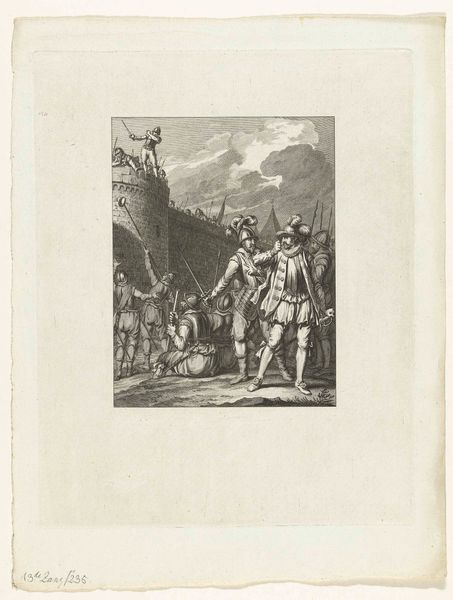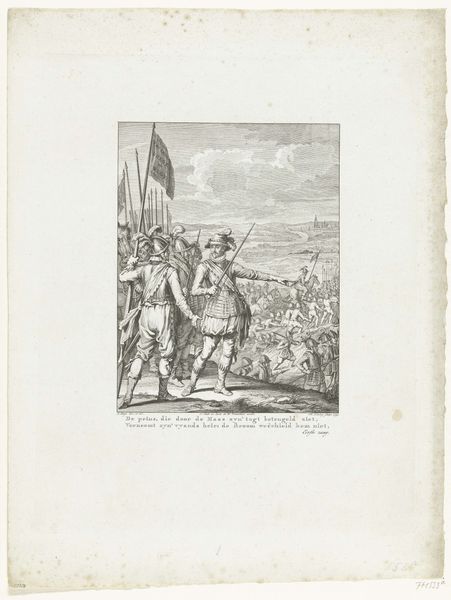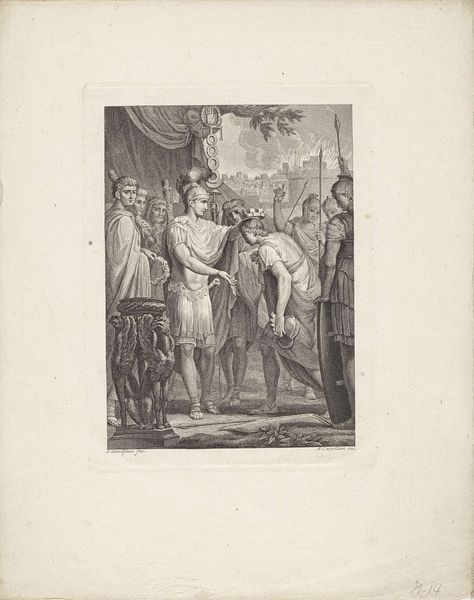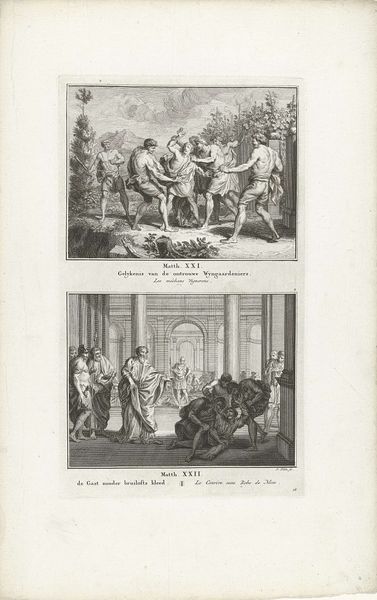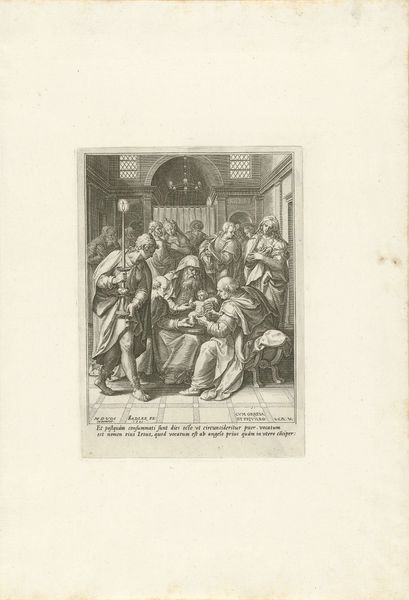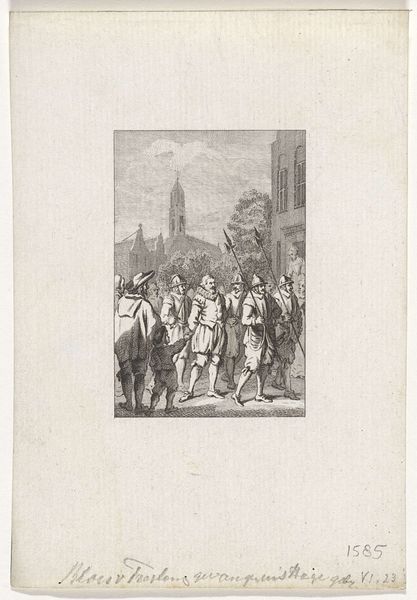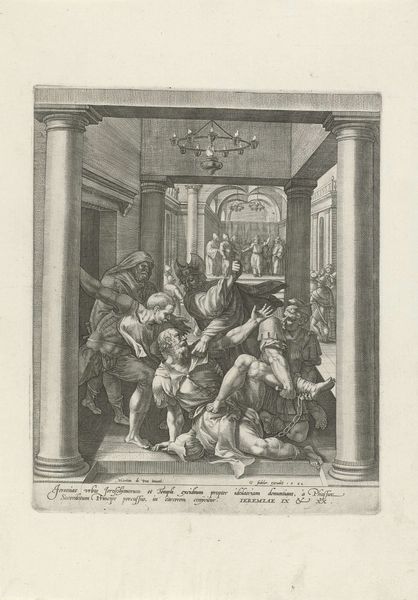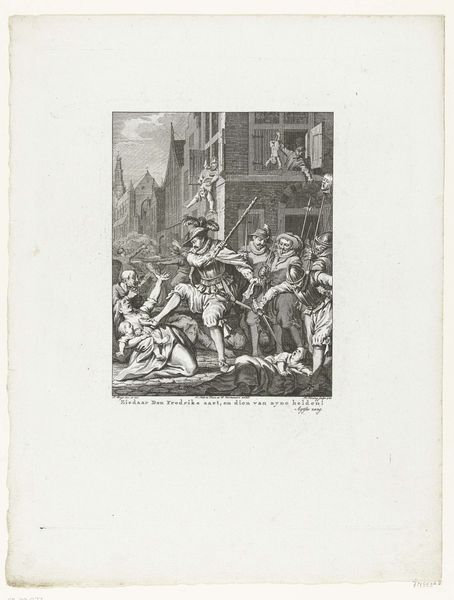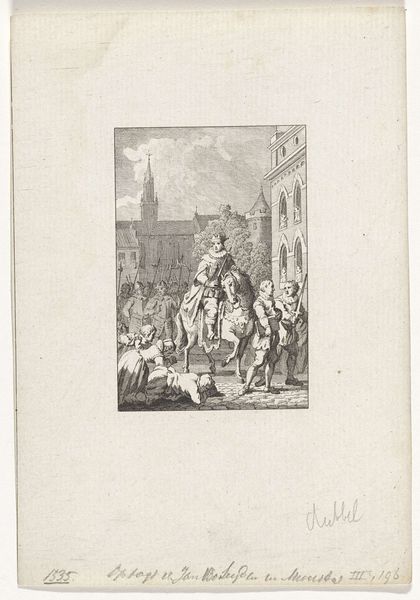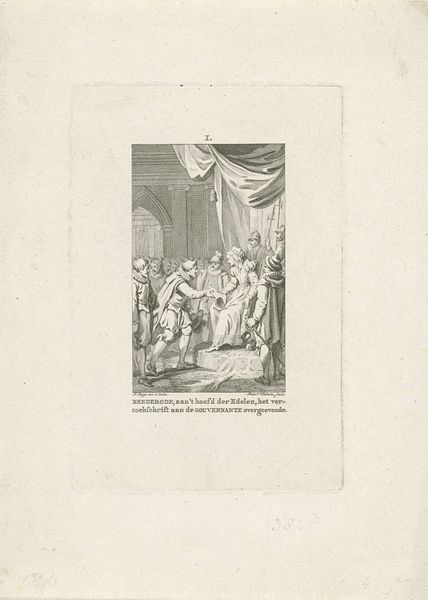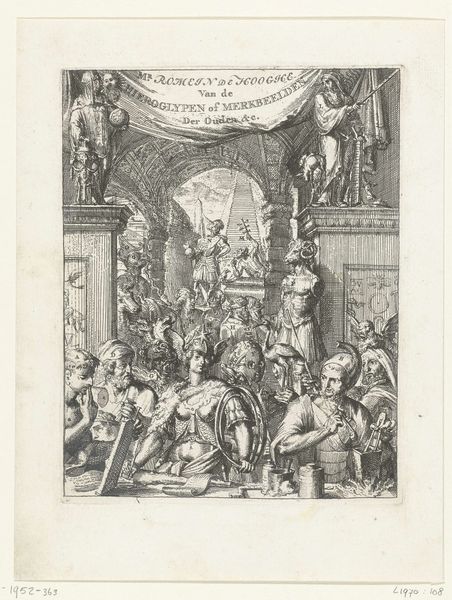
Dimensions: height 270 mm, width 215 mm
Copyright: Rijks Museum: Open Domain
Curator: Look at the atmosphere in this print, an engraving titled "Dood van Requesens, 1576", created around 1782 by Theodoor Koning. It just feels weighty, doesn’t it? Like a scene from a very dramatic play. Editor: Definitely somber. It is dark, stark, and evokes the tension of this pivotal historic moment. The printmaking gives it a distinctive handmade, labor-intensive quality too. Curator: Absolutely. And seeing it rendered in line etching really speaks to the drama of leadership at a time of revolt. Requesens, whose death is central to the scene, seems a figure overshadowed and almost outmaneuvered by surrounding forces and dynamics, suggesting the fragility of power in periods of conflict. Editor: Indeed. Notice the arrangement of bodies, from Requesens in the background to the kneeling figure serving wine in the forefront, all meticulously arranged on the plate. I'm interested in how class is expressed in Koning's choice of line, delineating social boundaries. Curator: That's fascinating. Think of the historical context – the 17th century Dutch Revolt and the Eighty Years' War. It frames this depiction, highlighting not just a death, but an absence that created political and social disruption across lines of identity. How were people grappling with a void in leadership in those crucial years? Editor: And who was performing labor and how—etching and engraving involved real craft work with precise materials, time invested... each stage holding meaning of the historic narratives! I also wonder about the production of paper it is printed on—who manufactured the rag paper it uses, what was it's production, source material? Curator: I appreciate the depth this examination adds to the reading of not just art history, but the ongoing human stories about shifts in power dynamics across identity. The artwork enables us to pose reflective, crucial questions about leadership and justice and political systems in periods of transition. Editor: Right. By thinking about the material reality of creating such art objects—where and how the paper, labor and imagery combine, helps us better understand 18th century social dynamics. Curator: Such different points of departure allow us to think about the art on view here today with refreshed minds.
Comments
No comments
Be the first to comment and join the conversation on the ultimate creative platform.
